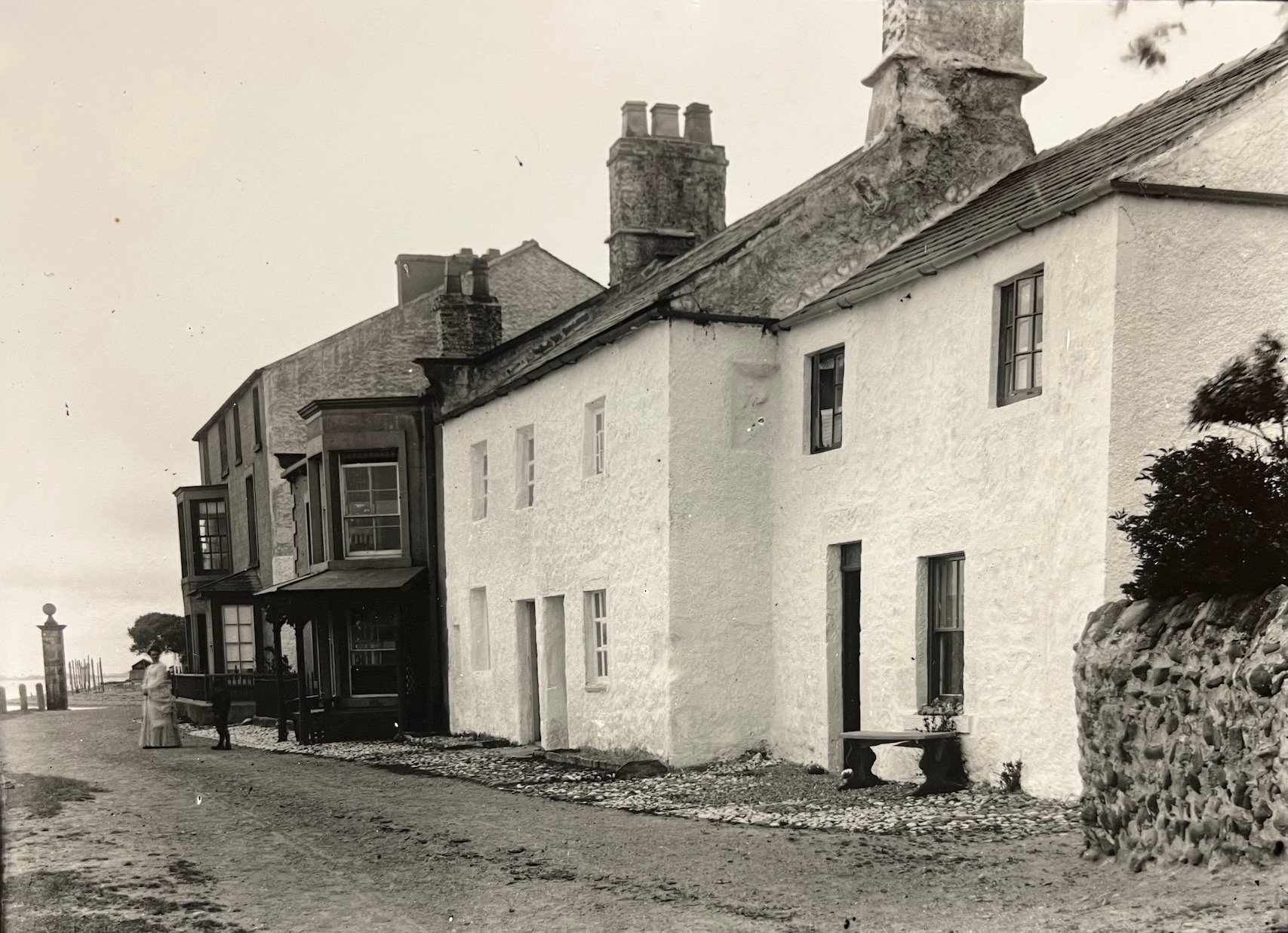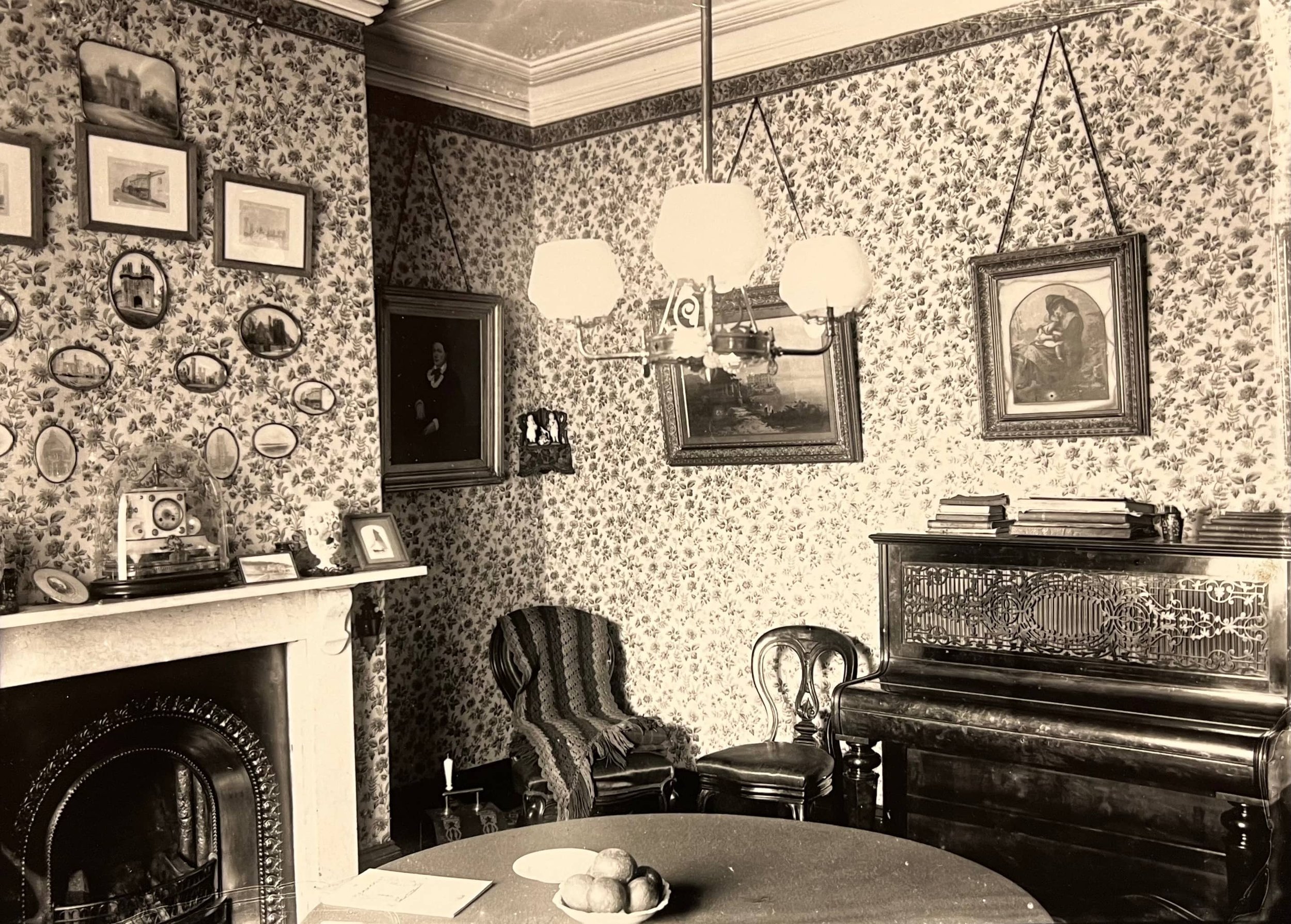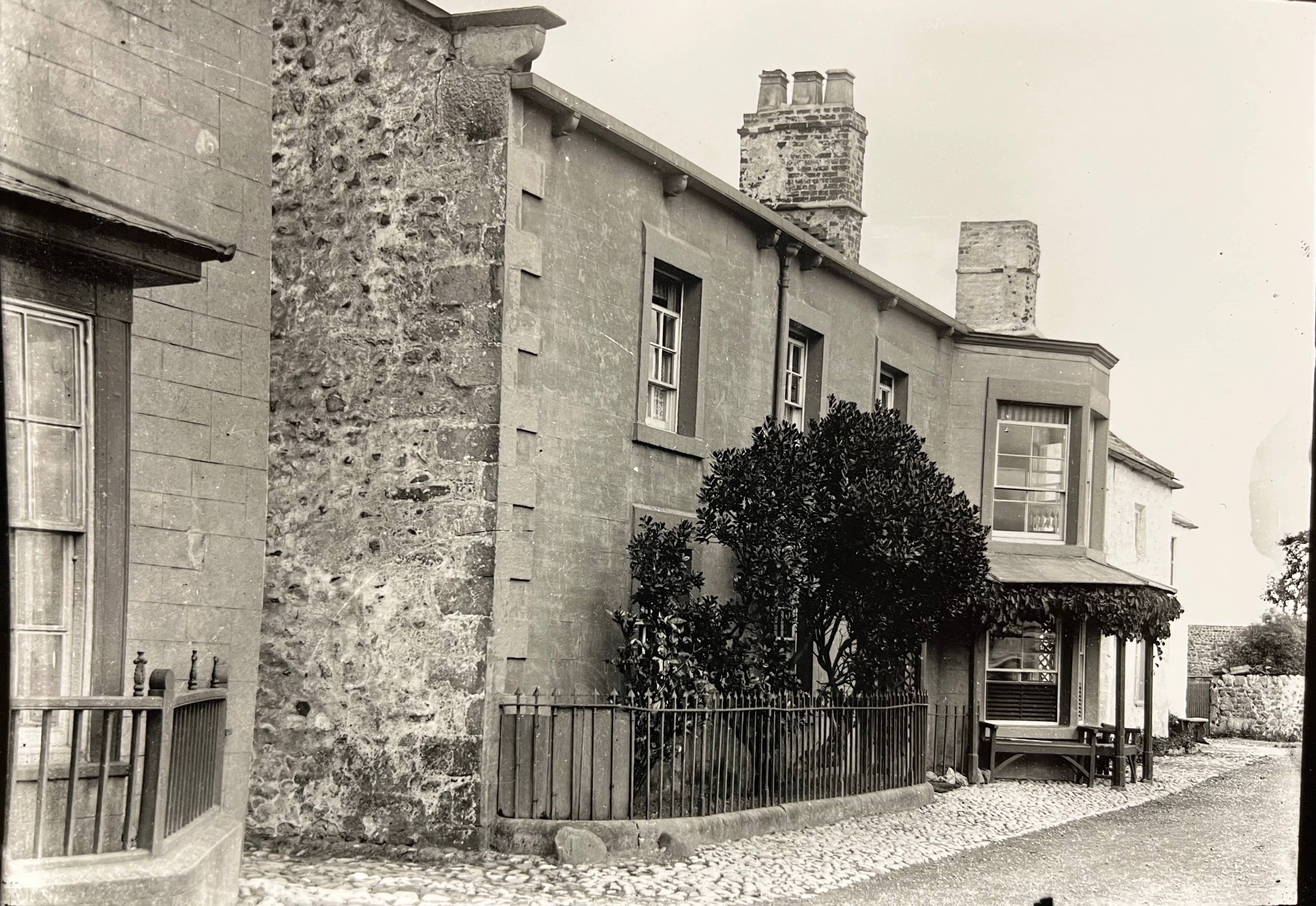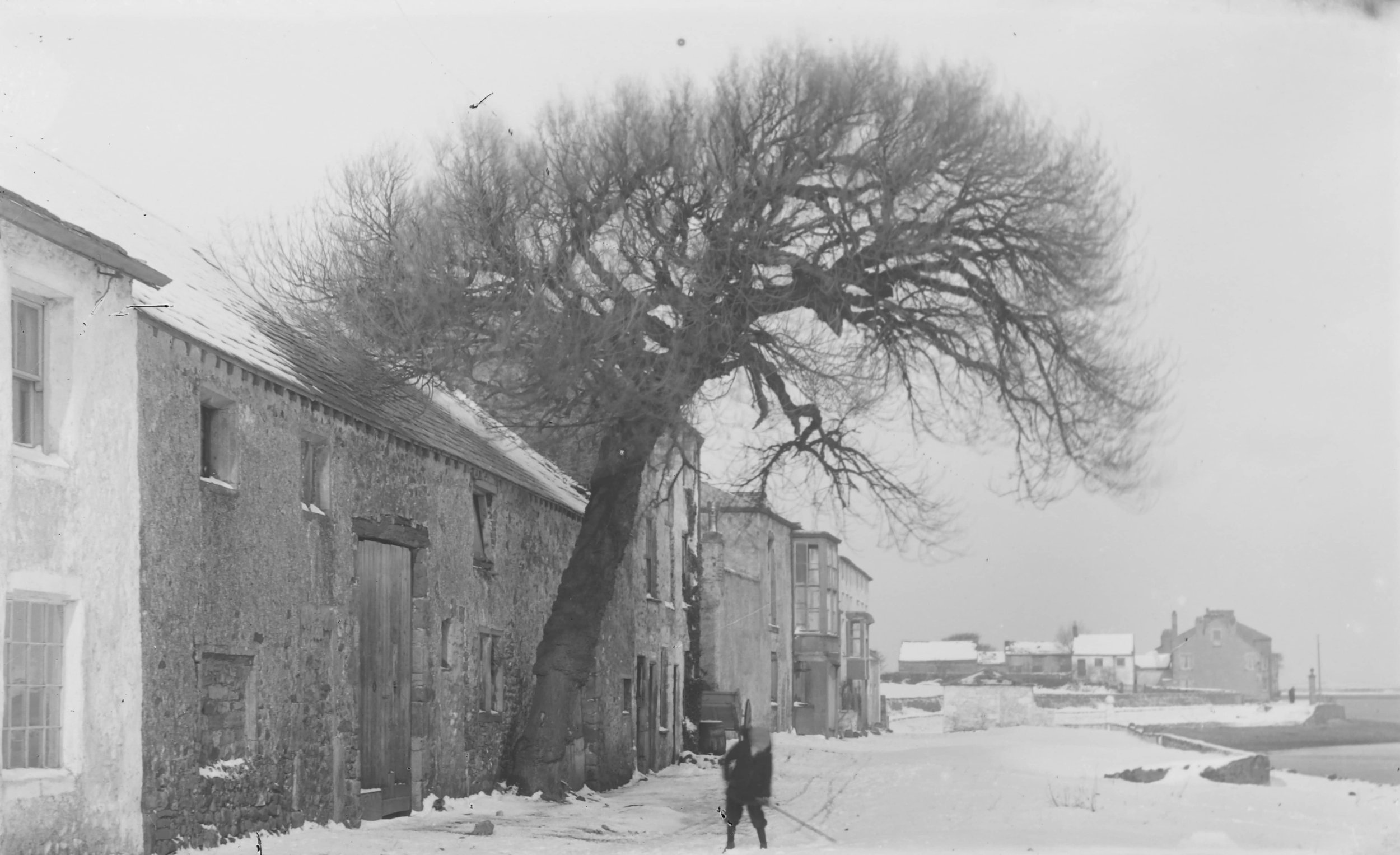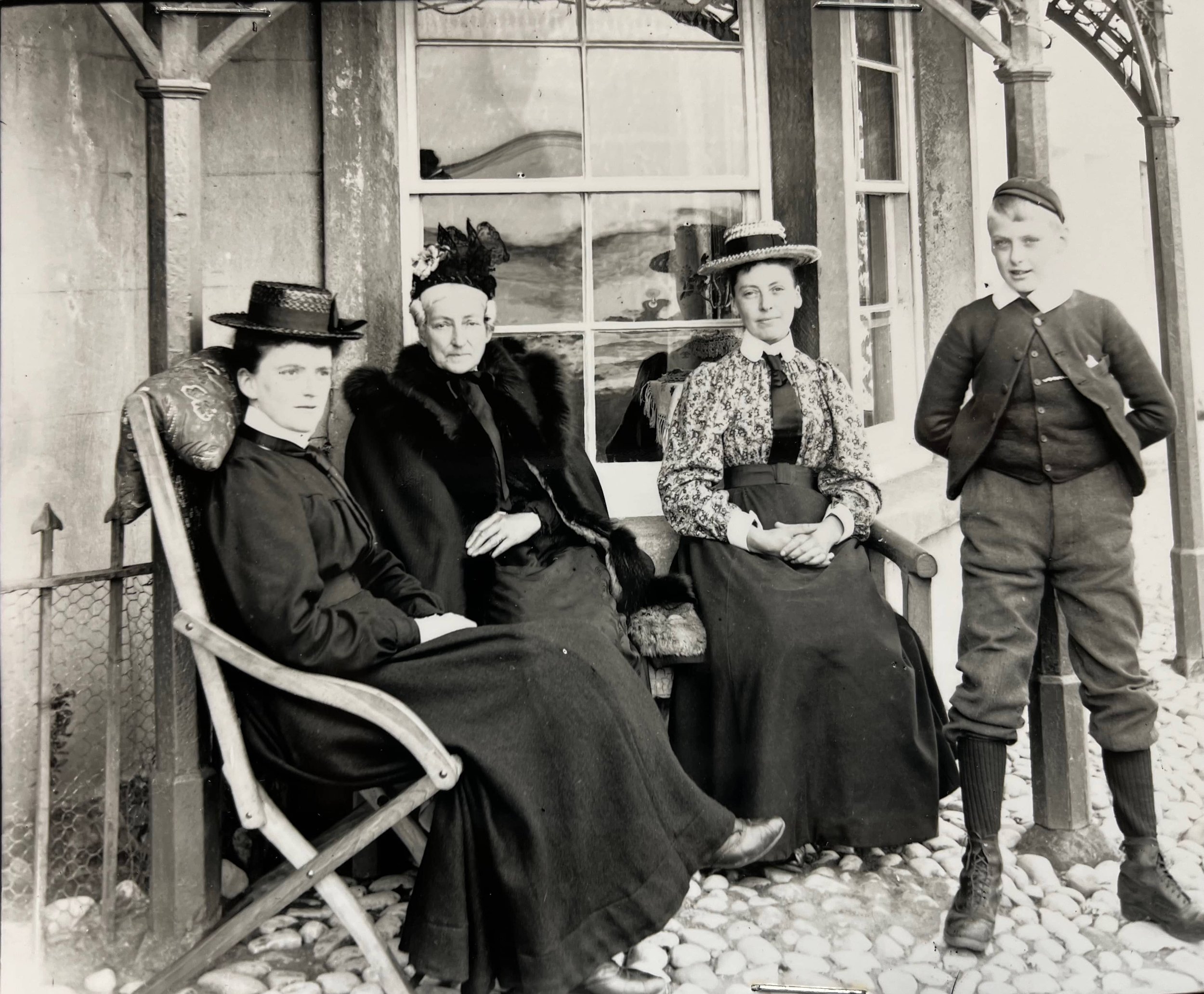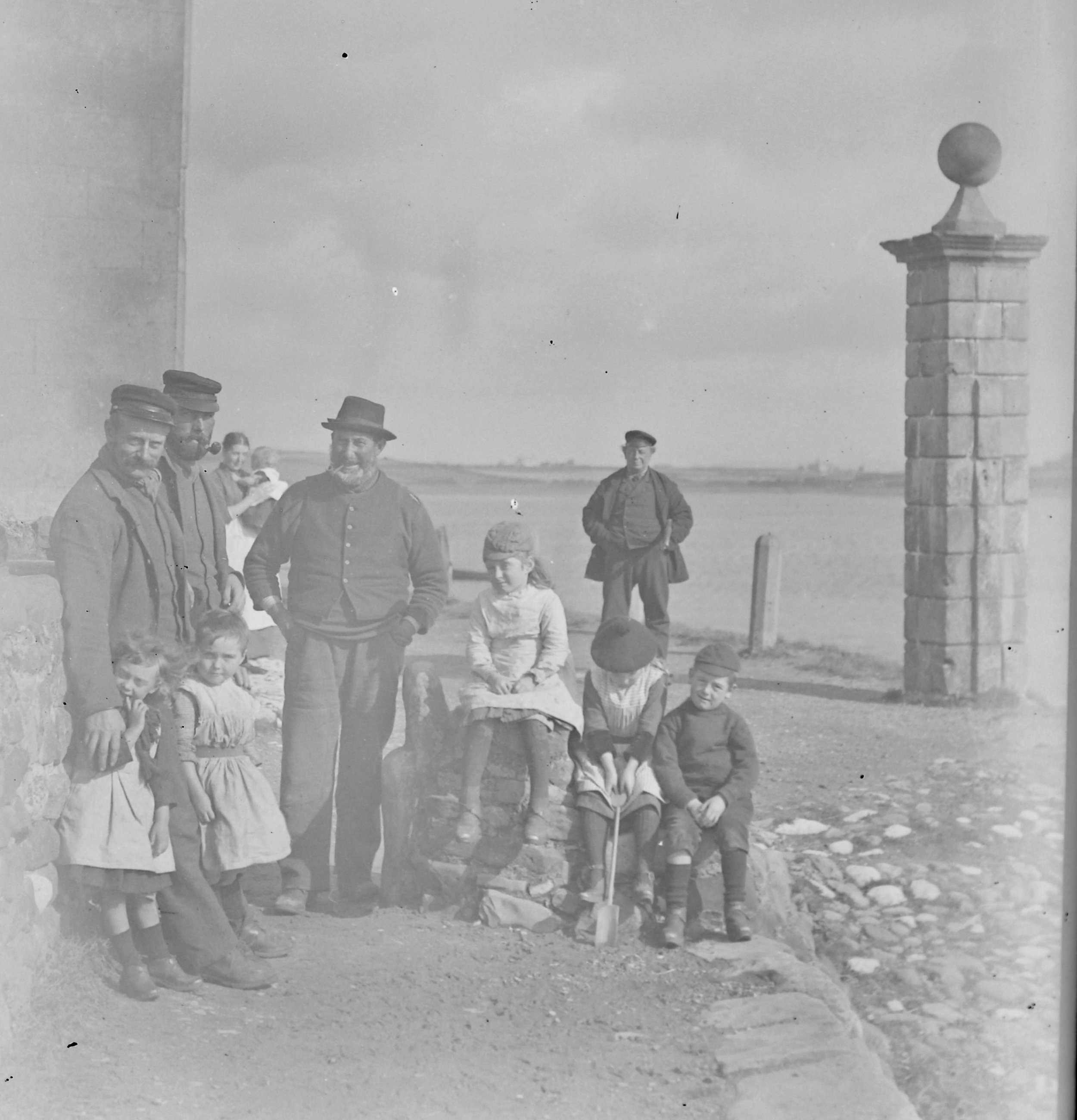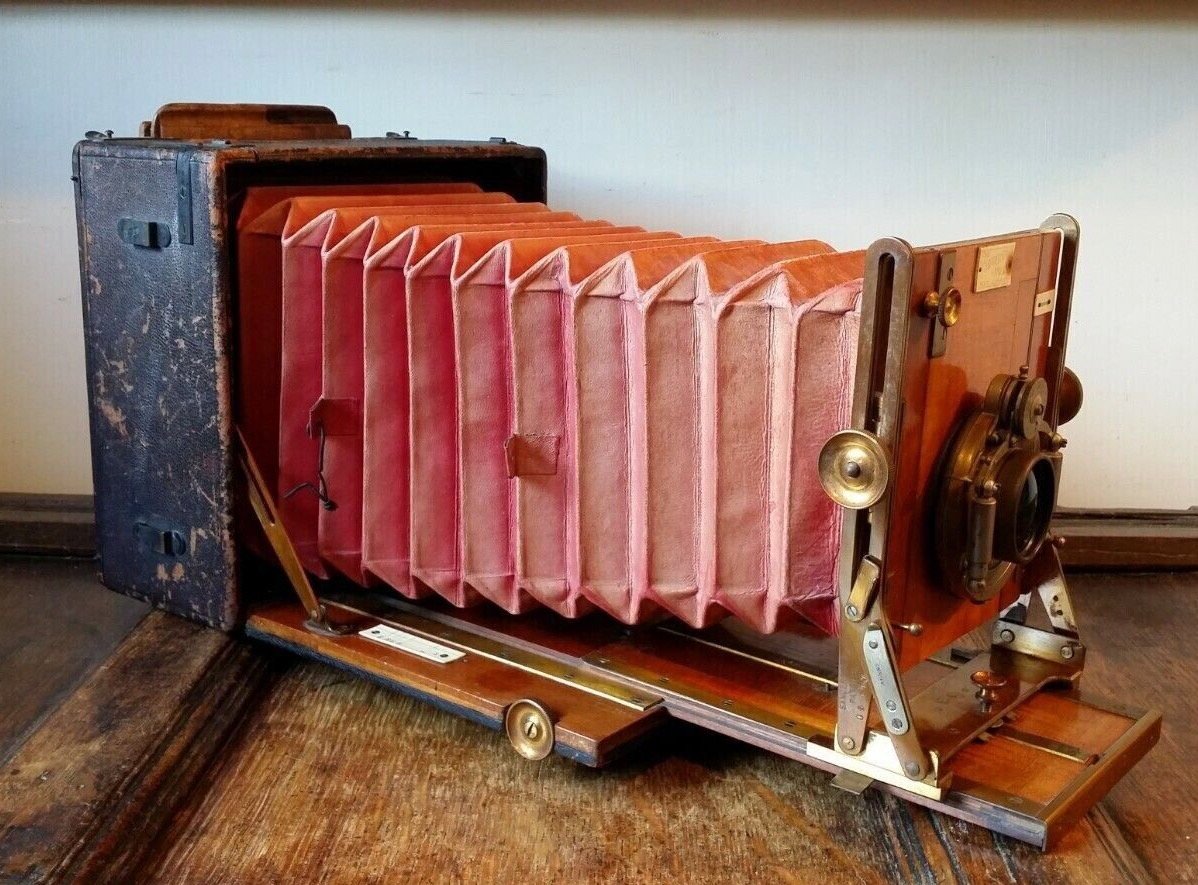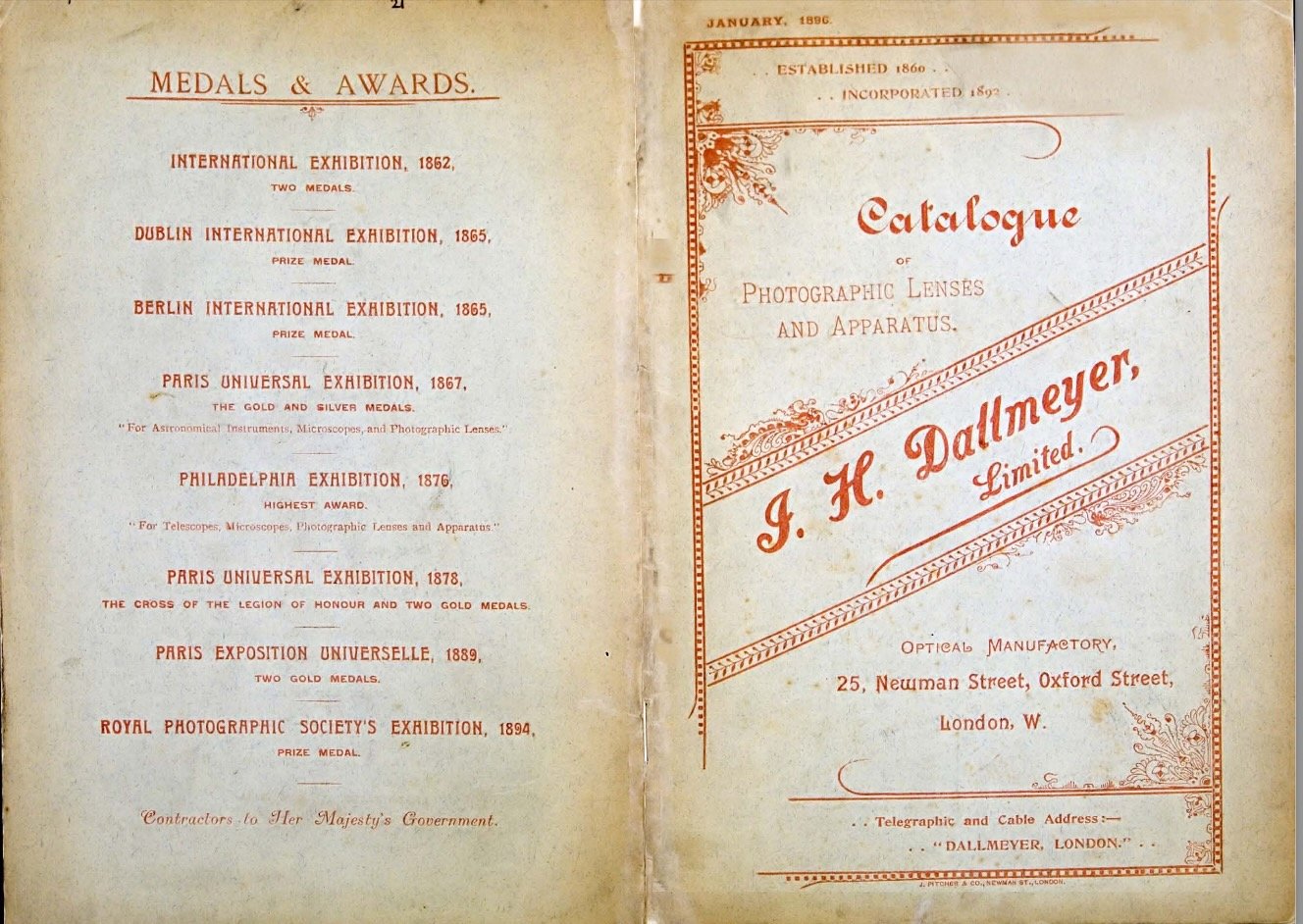The life and photographs of John Walker
Lancaster City Museums are releasing a series of podcasts ‘100 years, 100 objects: Stories from the collections of Lancaster City Museums’. This coming Tuesday, October 24th, the podcast will cover a John Walker photograph. The website has contributed to this edition and this article brings together the notes collected for the podcast.
John Walker (left) with James Spencer standing on the seat at the top of the Lane: From the collection of Jackie Parkinson-Winter Brown.
Sometime early in the 1980s, Ed Tyson a local antiquarian bookseller is at an auction sale in Lancaster looking through the various lots, perhaps searching for unusual books. He comes across several dusty boxes of old photographic plates. Intrigued, he takes a closer look and finds some are almost a century old and perhaps of local interest. He successfully bids for them and after a closer look, he realises their great significant offers them to the museum in Lancaster for proper historical study.
There are well over a thousand plates in the collection and most have survived the ravages of time. Lancaster City Museums recognised their historic value and purchased from Ed Tyson to add to the public collection.
This coincided with the 1985 opening of the Lancaster Maritime Museum and a number of Sunderland Point images appeared in the opening exhibition. The resulting publicity brings wide attention to these hugely important photographs and photographer – almost 50 years after his death - John Walker.
First Terrace c1895: Courtesy Lancaster City Museums
John was born in 1859, the eldest child of John and Alice Walker in Lancaster, living at St Leonard’s Gate. His parents, (also) John and Alice were married in 1855. John, then aged 62 was much older than 28 year old Alice.
John Walker Senior
John’s father was a well know figure in Lancaster and held a number of public offices, for a time he was Treasurer of the County Asylum and clerk to the Port Commissioners. Perhaps most importantly he was Harbour Master for the Port of Lancaster for 30 years, which included Glasson Dock well as Lancaster Quays.
In his obituary in the Gazette 4th of December 1880 are these kind words, ‘Mr. Walker for a long period held office of Clark to the commissioners of the Lune and (in) a mark of respect to his memory the mayor members of the Corporation and other gentlemen representing the key commissioners or connected with the port of Lancaster in official capacity accompanied the funeral cortege as far as the grammar school. Mr. Walker was widely known and most admired and a kindhearted gentleman who is greatly respected by all who knew him.’
John Walker
John’s birth was swiftly followed in rapid succession by four sisters. Fanny born in 1862, Emma in 1863, Dora in 1865, and finally, Ann Jane born in 1868. When his father died in 1880, at the considerable age of 88 - and after 25 years of marriage - John was 21.
In the census of the following year, 1881 John is recorded as a solicitor. It seems certain he was articled and practised at Hall and Marshall in Lancaster. In the census’ of 1891 and 1901 John continues to record himself as a working solicitor.
In 1892 they moved from St Leonard’s Gate to 16, Aldcliffe Road in Lancaster. In the collection of John’s photographic plates, there are images of its expensive, elegant interiors.
Inside 12 Aldcliffe Road 1892: Courtesy Lancaster City Museums
By now sisters Dora and Emma have both married, leaving behind John, his widowed mother Alice and the other two sisters Fanny and Ann Jane – known within the family and friends as ‘Jinny’.
Fanny (back left) and ‘Jinnie’ (back right) with John’s mother Alice in the garden at Aldcliffe Road. The children looking daggers at each other are believed to be a nephew and niece: Courtesy Lancaster City Museums
At some time after 1901 they move permanently from Aldcliffe Road to their summer home at Sunderland Point.
The House at Sunderland Point
A razor-sharp image of Number 7 c1900: Courtesy Lancaster City Museums.
Today it is 7 First Terrace. It was originally bought by John’s uncle Christopher sometime in the 1850s - then known then as Marine Villa. The property had been three smaller houses but converted into a single large, comfortable, and handsome property.
Christopher Walker used the house as a summer retreat, after he died in 1878 and was it bought by John’s father for £250.
The death of John’s mother Alice at Sunderland Point in 1906 seems to have been a key event. Personal accounts say he was devoted to her and from that time onwards became introverted, almost reclusive. He stops working. In the census of 1911, he records himself as a non-practising solicitor and in the census of 1921, when he is 62 - as a retired solicitor.
The Photographs
From 1878, when number 7 passes to John’s father, Sunderland Point appears in many images.
The Cotton Tree and Second Terrace c1908: Courtesy Lancaster City Museums
He continued taking photographs for the next 40 years - not only of the Point - John also took his camera to Glasson Dock, the Isle of Man, Darwin and Blackburn, London and to Scotland.
In 1897 The Midland Railway Company began the construction of a new harbour and railway link at Heysham. At the peak of building works more than 2000 men were housed in two wooden ‘villages’ known as ‘Klondyke’ and ‘Dawson City’ after the gold rush towns in North America.
John took many photographs of this development including the ‘Klondike Hotel’, a pub hastily put up by Lancaster Brewers Mitchells to accommodate the workforce and another shack-like building emblazoned ‘Klondike bakery’.
The Klondyke Hotel Heysham harbour 1896: Courtesy Lancaster City Museums
Klondyke Bakery Heysham harbour 1896: Courtesy Lancaster City Museums
There are a number of carefully arranged family portraits and although quite formal with mother, Fanny, and Jinny half-smiling there remains an underlying affection.
Jinny (left) Mother Alice and Fanny with nephew more grown up: Courtesy Lancaster City Museums
There are images of local people living at Sunderland Point - unfortunately not many - who have agreed to pause daily business and be photographed.
Gardner and Spencer families c1894: Courtesy Lancaster City Museums.
This is John’s best-known photograph of Sunderland Point; it can still be found at the entrance of the Maritime Museum in Lancaster. This image was chosen as one of the 100 objects, 100 years for Lancaster City Museum’s special podcast series celebrating their centenary.
It is also poignant image, James Gardner (first right) then aged just 33 will be dead in a few months leaving behind his pregnant wife Betty (in the background holding William) and seven other children.
John takes less photos after 1906, perhaps due to his mother’s death - but that’s only part of the story.
Memories of John
There are recollections of John and this is good photo of him at Glasson Dock.
John Walker (right) and camera c1900 at the watch house Glasson Dock: From the collection of Jackie Parkinson-Winter Brown.
Hugh Cunliffe in his ‘The Story of Sunderland Point’ writes.
‘I have a vague memory of him as being dressed in an Edwardian type of suit with narrow trousers and he had a thick moustache, he was sometimes irreverently referred to as ‘umbrella legs.’
John Walker lived up to his name and went long walks, he won my approval because you would sometimes give me a toy boat which he had found washed up on the tide line I never found any. My remembrance of the sisters is also vague I seemed to think they were old fashioned and wore dresses down to the ground or almost.’
There are articles on John and the plates, in the Lancashire Evening Post and in Lancashire Life, written in 1985 (coinciding with the opening of the Lancaster Maritime Museum), where there is more insight in John and the family.
It seems the fisherfolk regarded the tall slim bachelor with his tripod camera and its black hood with the deference that was reserved for the gentry, mixed with an amused tolerance for the eccentric. Known as ‘Johnny’ Walker, He was an educated man who is remembered for intervening in parish disputes and assisted local unlettered people in legal matters.
In his old age he was stooped figure usually wearing a tall stovepipe hat and narrow trousered black suit well darned and patched; with his pet terrier he would go to pick up kindling sticks on the shore.
It’s also said that his mother and two sisters their good works included teaching sewing to the local girls.
From contemporary descriptions it appears the family had fallen into financial hardship. John was struck off the membership of the Lancaster Photographic Society for subscription arrears. The expense of photography would have been difficult to meet.
In 1929, aged 62 the youngest sister Ann Jane ‘Jinny’ died at the Point and is buried in Overton.
John died in 1939 aged 80 and almost destitute. It is said ‘he was unable to look after himself and was moved into the Lancaster Workhouse’. The formal death notice in the newspaper gives his last address as ‘Quernmore road ‘where the building still known as the Workhouse was located.
The oldest sister Fanny died in 1941 also aged 80 living at the time with her younger sister Dora at Fern Lea, Ashton Road.
The Photographic equipment
He is believed to have used a Sanderson dry half plate camera and years after his death his plates lay neatly catalogued his developing and printing chemicals scrupulously labelled.
Sanderson dry half plate camera c1900s: Internet free stock
John was a skilled and pioneering photographer, keeping well abreast of all the latest developments of the time. He used the first type of flashbulbs - enormous things, and he mixed all his own chemicals for developing and printing. He also used a Delmeyer telephoto lens which was extremely unusual and rare, identified as being only in the second year of manufacture.
1896 Dallmeyer catalogue: Courtesy the Dallmeyer Archive
The plates after John Walker’s death
It is our great fortune that we have the plates today.
After the deaths of John and Fanny the house passed to the ownership of their sister Emma who had married the Rev. George Ormond Redmond. After their deaths the house was passed to children Roy Redmond and his sister. It appears Roy took great care of the plates and when they left the Point in the early 1960s - moving to the old schoolhouse in Overton - took the plates with them.
Roy Redmond died in the early 1980s and the effects of his estate including the Walker photographic plates went to the sale room - where Ed Tyson went to buy books.
Lancaster City Museums
Although well listed and stored they were not fully added to the museum collections and catalogues, meaning that not many people knew of their existence in the museum, and they were not readily accessible to researchers.
There has been a recent revival in interest in these remarkable photographs with their ‘rediscovery’ has led to their being added to the searchable museum catalogue. Although conservation negatives were taken in the 1980s, they are now being systematically digitised to make high resolution digital copies.
We are grateful for the considerable help and advice from many sources, we give special thanks to Lancaster City Museums for permission to use many of John’s photographs.
It is hoped to publish a gallery of John’s photographs next weekend.

